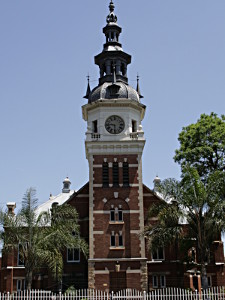The Paul Kruger Church: A Testament to Pretoria's Rich History
The city of Pretoria, known for its sprawling landscapes and rich history, is home to various architectural marvels. One such edifice, opposite the house of Paul Kruger, is the Reformed Church, also known as the Dopper Church. A testament to both architectural prowess and the city's deep-rooted faith, this church encapsulates a significant portion of Pretoria's history.
The Reformed Church's origin can be traced back to 1859. Its very first brick-and-mortar establishment, however, only graced the town in 1863. Fast forward a few decades, and on 21 December 1894, the church board made a historic decision - they decided to collect funds for a new church building. Architect Klaas van Rijsse was commissioned for the design, and by April 1896, Daanen & Dorlas's tender was sanctioned for the project.
The subsequent year, Paul Kruger, a revered figure in Pretoria's history, laid the cornerstone of the church on his 71st birthday, 10 October 1896. This ceremony saw the embedding of a lead tube within the foundation. This tube contained documents and information about the Reformed Church. The church doors were formally opened by Kruger on Christmas Day, 25 December 1897. The project culminated at a whopping £13,000, with Kruger himself contributing £2,250. The building was inaugurated on Christmas Day in 1897 after President Paul Kruger ceremonially unlocked the doors. The edifice, designed in the grandeur of the Dutch Neo-Renaissance, could seat almost 900 church-goers.
1951 was a landmark year for the church. During restoration, the original lead tube, was reopened. It was then replenished with additional information and once again embedded into the church's wall. The 1950s also witnessed the construction of the Paul Kruger hall, situated to the southwest of the church. Built with face brick in 1955, it eventually gave way to a new church hall by 1983, designed by the talented triad of architects - Moerdyk, Holzapfel, and Slabbert. This hall was strategically placed at the rear of the church.
Recognizing its architectural and historical significance, the Paul Kruger Church was declared a National Monument on 7 September 1979.
The interiors of the church house relics of its storied past. Two chairs, standing as a testament to the times, were the very ones on which President Kruger and his wife would sit during church services. Situated in front of the pulpit, these chairs have been declared national monuments. Moreover, Paul Kruger himself, on occasion, would lead sermons, captivating audiences with his words.
In conclusion, the Paul Kruger Church, or the Dopper Church, is not just a religious establishment. It stands as a reminder of Pretoria's history, culture, and the profound impact of figures like Paul Kruger. For anyone visiting Pretoria, this church offers a glimpse into the past and the deep-rooted faith of its residents.
Further Reading
For further insights into the church, explore these resources:

